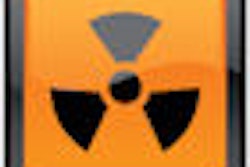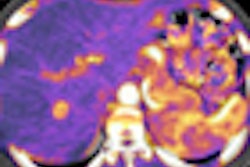Educational Exhibit | LL-PH4828-L09 | Lakeside Center
Cardiac CT is more and more often used in clinical practice and was long associated with a relatively high radiation dose. Newer dual-source scanners are available equipped with special techniques to reduce the dose of coronary CT angiography (CTA) scans. It's a challenge to develop scanning protocols that use little radiation dose and are robust enough to guarantee good image quality in daily clinical practice.Two important dose reduction techniques are illustrated in this exhibit: adaptive electrocardiogram (ECG)-pulsing and adaptive pitch selection. The rationale and physics behind these techniques are discussed and, more important, illustrated with the aid of real-world examples and cases, according to CT physicist Marcel van Straten, Ph.D., from Erasmus MC University Medical Center Rotterdam in The Netherlands.
ECG pulsing avoids the irradiation of the patient during phases of the cardiac heart cycle that are not of interest (for example because there is too much motion during that phase). An ECG-pulsing protocol is discussed that provides dedicated pulsing windows depending on the patient's heart rate. This protocol has proved to be robust and reduce dose (see publication by Weustink et al in Radiology, July 2009).
Compared to the rotation speed of the x-ray tube, the human heart is beating at a relatively low pace. As a consequence, the table feed per rotation is kept relatively low in order to assure that sufficient data are acquired for reconstruction of the heart in a particular heart phase. Moreover, multiple rotations at one position in the heart were often used to increase the temporal resolution of the scanner (multisegment reconstructions). This also slowed down the table.
With the introduction of the dual-source scanner, multisegment reconstructions are no longer needed, and the table feed can be adapted to the patient's heart rate. High heart rates allow for relatively high table speeds, i.e., high pitch values. An increase of the pitch value results directly in a decrease of the patient dose.
Experience from scanning more than 250 patients was used to emphasize and illustrate the key concepts of dose reduction in coronary CTA in clinical practice. Thanks to the scanner's automated adaptation of ECG pulsing and pitch to the individual patient (with its individual challenges due to heart rate and heart rhythm irregularities) a considerable dose reduction is possible.




















